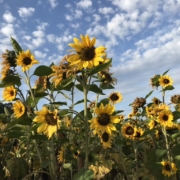Research Summarizes Results of Using Cover Crops for Phytoremediation
The Helmholtz Center for Environmental Research summarized the results of more than 100 scientific studies to identify cover crops that could be useful for phytoremediation of agricultural lands. Using plants to remediate soils is not a new idea, but utilizing cover crops to remediate agricultural lands is a less understood practice. In this study, researchers focused on identifying cover crops that could perform six different types of soil remediation: nitrate, salts, metals, pesticides, plastics, and antibiotic resistance genes. They found that rye and sunflower could be used as cover plants to prevent excess nitrate in the arable soil from being washed out and polluting the groundwater, while clover, rye, or rape can help remove unwanted metals. Meanwhile, mustard, grasses, and sunn hemp can help remove pesticides from soil. Depending on which contaminants the plants are removing, they may be used as green manure in the field, harvested for food or feed, or used in biogas production. Researchers reported that it was difficult to identify cover plants that are particularly suitable for phytoremediation targeting soil contamination by plastic or antibiotic resistance genes. The next phase of this research will involve field studies with farmers to test the practicability of phytoremediation for agricultural lands.



 (USDA photo by Rene Carranza)
(USDA photo by Rene Carranza)